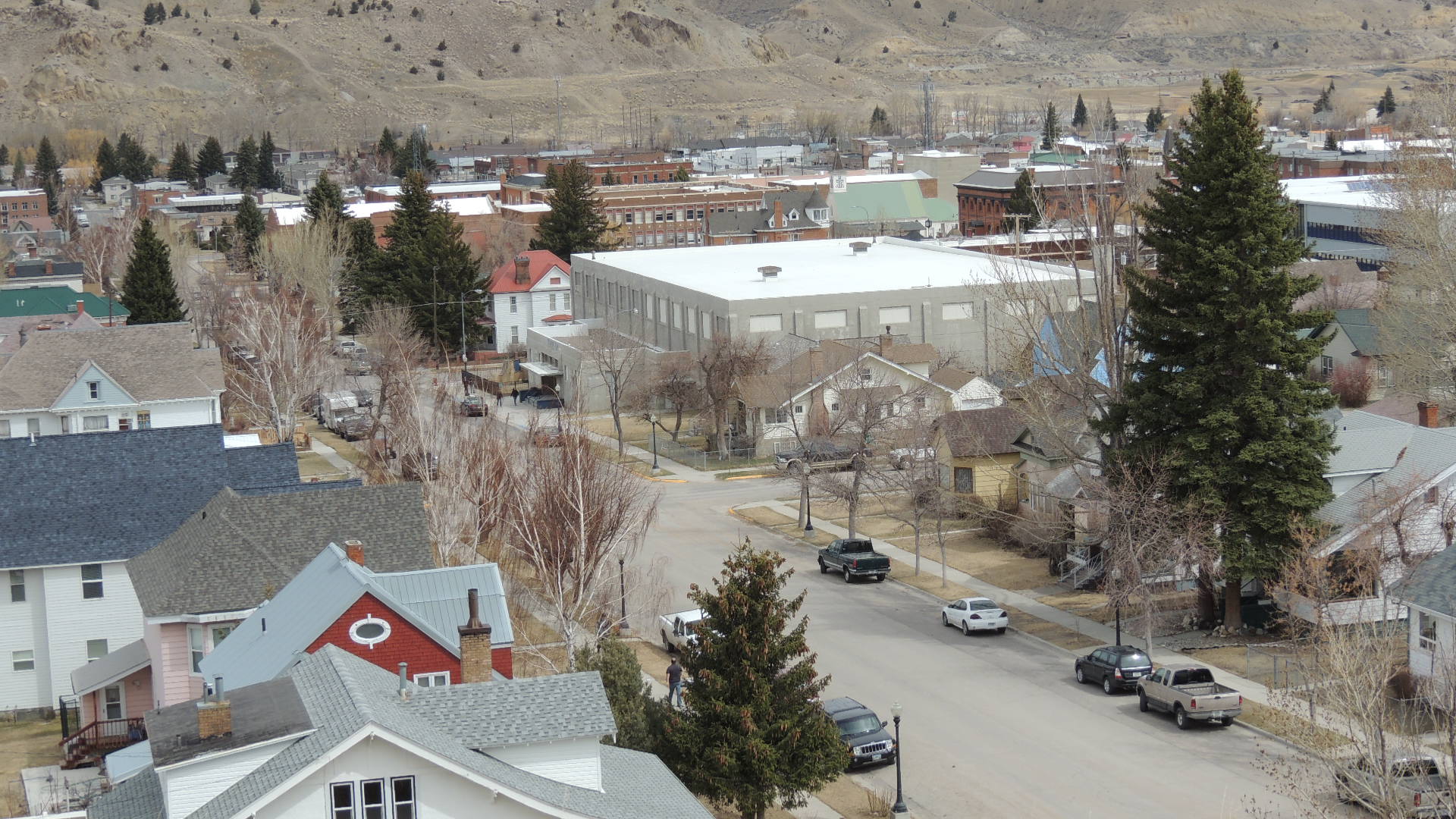|
 Anaconda Commercial Historic District - Anaconda, MT Posted by:  T0SHEA T0SHEA
N 46° 07.737 W 112° 56.977
12T E 349388 N 5110222
The Anaconda Commercial District comprises the centre of the city, containing most of the historic commercial buildings erected in the first years of Anaconda's life. Many of them remain, some in excellent condition and some much less so.
Waymark Code: WM15Q4C
Location: Montana, United States
Date Posted: 02/07/2022
Views: 1
ANACONDA COMMERCIAL HISTORIC DISTRICT
Backed by the powerful San Francisco syndicate of Hearst, Haggin and Tevis, Marcus Daly built the world’s largest smelter (combined upper and lower works) on Warm Springs Creek between 1883 and 1889. Along with the smelters, Daly envisioned a substantial city and filed the original townsite plat June 25, 1883.
While smelter construction got underway that summer, people arrived faster than building supplies. The first boarding houses and saloons opened in tents. A railroad spur soon linked the town to the Anaconda Mine in Butte. By the time the furnaces of the Upper Works fired up in the fall of 1884, Anaconda’s 80 buildings included seven hotels and boarding houses and twelve saloons. At the end of 1885, Anaconda’s reduction works had a payroll of 1,700.
The Anaconda Copper Mining Company dominated the local economy. Company subsidiaries built and maintained the city water supply, electric power system, and street railway. Daly and his associates established key commercial enterprises including the major bank, retailer D. J. Hennessy’s local company store, a race track, the highly acclaimed Montana Standard, and the Montana Hotel. Modeled after New York City’s Hoffman House, this premier hotel represented Daly’s political ambition as he promoted Anaconda in the race for state capital. Daly was bitterly disappointed when the city lost the capital race in 1894, but Anaconda survived as a vibrant piece of the Montana mosaic.
Significant for its labor history and ethnic diversity, this unique company town was a place where private enterprise also flourished. Elaborate Victorian-era business blocks and the more utilitarian façades of the early twentieth century are testimony to a vigorous business community.
From the NRHP plaque
Anaconda Commercial Historic District
The Anaconda Commercial Historic District lies at the heart of the city and is composed of five full commercial blocks, eight half blocks, and one quarter-block in the Original Townsite. The district contains 107 buildings, including Anaconda's largest concentration of brick business blocks, a small number of single dwellings, and two government buildings. Ornamental, cast-iron street lamps line the streets. The system is a contributing structure in the district. The district encompasses a portion of the main east and west thoroughfares through the Warm Springs Drainage, in addition to the main north-south route in Anaconda. The level streets are arranged in blocks 300-feet square with 20-foot wide east-west alleys bisecting almost every block. Each block features twenty four 25-foot wide lots, with the exception of the 200-500 half-blocks on East Park Avenue, which are residential blocks containing twelve 50-foot wide parcels.
The streetscapes are relatively uniform in appearance and massing, although they do not render an architecturally homogeneous view. The streetscape features a diverse grouping of late 19th-century and early 20th-century commercial blocks, most composed of brick, that display a variety of heights and designs. Modern sodium-vapor luminaries intermix with original, cast-iron street lamps lighting each street. The eclectic combination of varied forms and styles represents the evolution of Anaconda's commercial built environment from 1883 through 1945.
Most of the buildings in the Commercial Historic District were constructed between 1891 and 1900. Of the 107 buildings in this district, 63 percent contribute to the historic character of the neighborhood. In general, most buildings exhibit a modified rectangular plan, with historic facade ornamentation ranging from simple brick cornices and surrounds, to elaborate cast iron and polished stone fronts. Architectural integrity was evaluated primarily on retention of form and massing, and survival of the original detailing. The 37 percent of the district that does not contribute is generally composed of small and unobtrusive buildings. Many of these buildings retain modern metal facades that merely mask the original brick and cast iron ornamentation, and could be easily removed.
From the NRHP Nomination Form
 Visit Instructions:
To post a visit log to this waymark you need to visit and write about the actual physical location. Any pictures you take at the location would be great, as well.
Recent Visits/Logs:
| There are no logs for this waymark yet. |
|
|
|
|